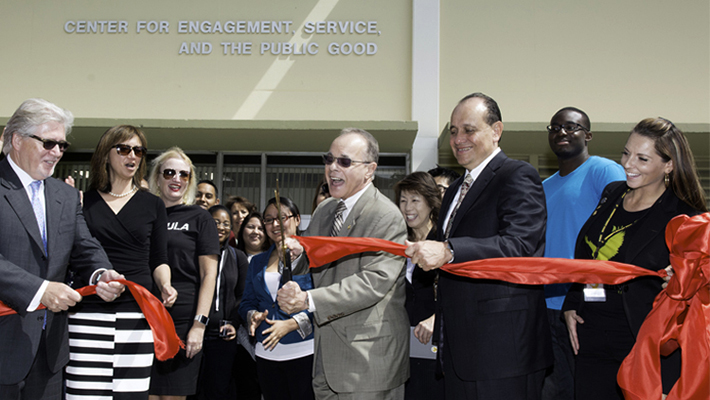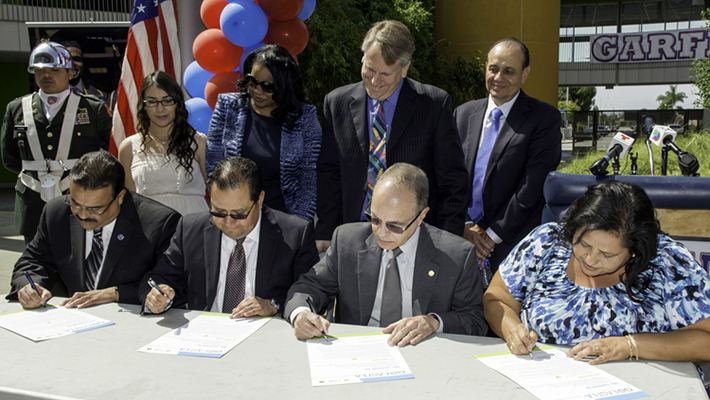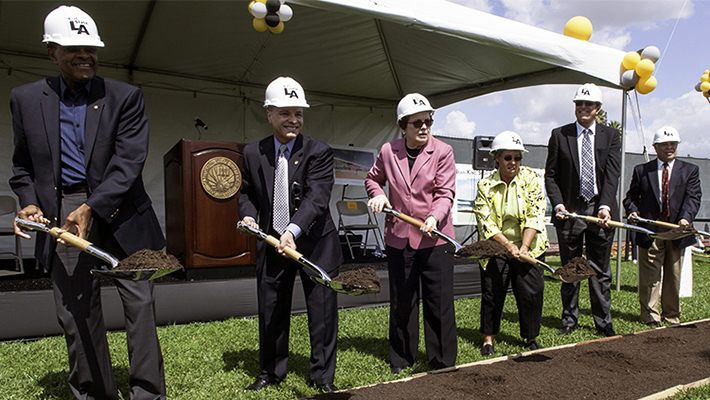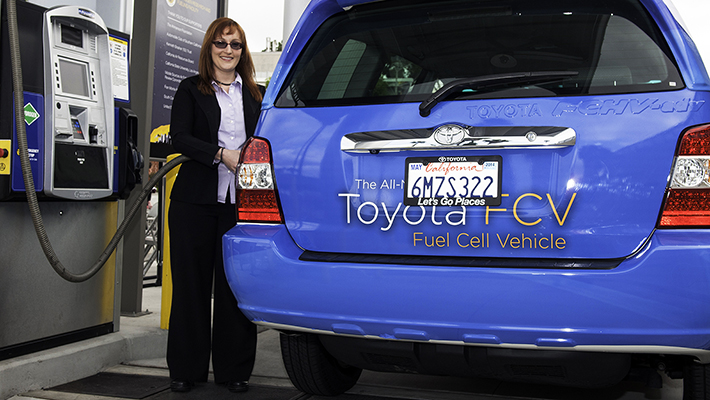One year into President Covino’s term, he’s turning vision into action
Actions speak louder than words, as they say, so Investiture Week was an opportunity for President William A. Covino to not only talk about his vision for Engagement, Service, and the Public Good, but to show how Cal State L.A. plans to commit to that theme.
During Covino’s first year in leadership at the University, programs have been developed to tackle the challenges and opportunities that arise in our communities through the applied knowledge, research and tools of this great institution.
“I came to Cal State L.A. because we are poised to transform the years ahead as we become more deeply committed to the well-being of our city and region, more clearly focused on becoming a powerful engine of social mobility, and more fully aware that compassion and caring for one another are at the heart of what education means,” Covino said at the Investiture Ceremony.
Three such projects: the Center for Engagement, Service, and the Public Good, the Billie Jean King Sports Complex, and the Hydrogen Research and Fueling Station—were unveiled during Investiture Week.
Three months later, Cal State L.A. Today Magazine checks in on the progress made by these efforts.
CENTER FOR ENGAGEMENT, SERVICE, AND THE PUBLIC GOOD AND GO EAST L.A.
With an emphasis on community, the University needed a centralized office to act as the home base for doing good in Los Angeles; thus Covino established the Center for Engagement, Service, and the Public Good.
The new center, directed by Taffany Lim, oversees co-curricular volunteerism, including the venerable Educational Participation in Communities (EPIC), as well as implementation of a ground-breaking general education requirement that all students take six units of civic and service learning courses in order to graduate. This university-wide educational policy, #IServeLA, will provide up to 3,500 student volunteers to the community each year.
“One of the great benefits of connecting community service with academic coursework is the discovery of that margin of overlap between what we read and hear in books and lectures, and how it is applied and practiced in the larger world,” said Covino in his Investiture address. “And as we get to know others who are devoted to, and benefit from, community service, we develop an ethic of generosity.”
The Center for Engagement, Service, and the Public Good will play a crucial role in forging new relationships with community organizations and local industries. One such partnership is GO (Great Outcomes) East L.A.: A Pathway for College and Career Success, which fosters long-term educational and career success for East L.A. students.
The initiative recognizes that success in higher education and career readiness begins at early childhood and that support for families is a group effort between schools, community, government and businesses.
One of the first activities for the program is a cohort of 51 Garfield High School students who enrolled at Cal State L.A. for Fall 2014. Support services are being created to help them transition from high school to university life, with weekly email tips, a website, student-to-student mentoring, and advisement.
“We are really passionate about the GO East L.A. initiative because we know that Cal State L.A. students not only come from the neighboring communities, but they are committed to giving back to the community, as well,” says Lim.
BILLIE JEAN KING SPORTS COMPLEX
The Rosie Casals/Pancho Gonzalez Tennis Center celebrated its groundbreaking during Investiture Week.
Named for tennis legends Rosie Casals and the late Richard “Pancho” Gonzalez, the center will include nine lighted tennis courts and a 6,800-square-foot-building, ideal for camps, clinics, tournaments and special events.
At the groundbreaking, Casals and alumna Billie Jean King unveiled the design of the center along with other projects planned for the Billie Jean King Sports Complex: a renovation of Reeder Field, the entrance to the Jesse Owens Track and Field and construction of a new 5,000 seat event center.
The tennis center will be home to the Pancho Gonzalez Youth Foundation, and will serve as a host site for other community organizations that use sports to teach local children about physical fitness and building character.
“Once these enhancements are made to the Billie Jean King Sports Complex, Cal State L.A. will have athletic facilities on par with many NCAA Division I programs,” says Athletic Director Dan Bridges. “The Tennis Center will serve as a fitting home for our nationally-ranked tennis team and for hosting a wide variety of community-based activities and programs each year.”
HYDROGEN RESEARCH AND FUELING STATION
At the intersection of engagement and the public good, you’ll find Cal State L.A.’s Hydrogen Research and Fueling Station, which was unveiled during Investiture week.
The largest university-operated station in the nation marks Cal State L.A. as the latest stop in California’s expanding hydrogen highway and a leader in technology development.
In the months ahead, any driver will be able to pull off the 10 or 710 freeways, drive onto the university, and fuel up.
“Through hands-on research and learning opportunities, this facility will help prepare our students for the jobs of today and tomorrow. It will help our faculty envision and conduct research on transportation systems of the future,” Covino said during the opening.
Though the station is awaiting certification from the state before it can sell to the public, it has fueled vehicles for test drivers from partners like Hyundai, Mercedes-Benz, Honda, GM and Toyota. And it’s welcomed more than 500 visitors, from industry and other colleges, eager for a tour of the cutting-edge facility and research laboratory.
Many of those visitors are students who are concerned about the environment and the university’s efforts to combat the effects of climate change.
“Sometimes I ask these young people about hydrogen and they have no clue. But when I ask them about global warming, they all know what I’m talking about,” says Station Manager Michael Dray. “We tell them that we’re not going to be around forever. That these are problems that they and their families are going to face as they grow old. As part of the hydrogen infrastructure, we’re trying to give them a tool to work with.”



